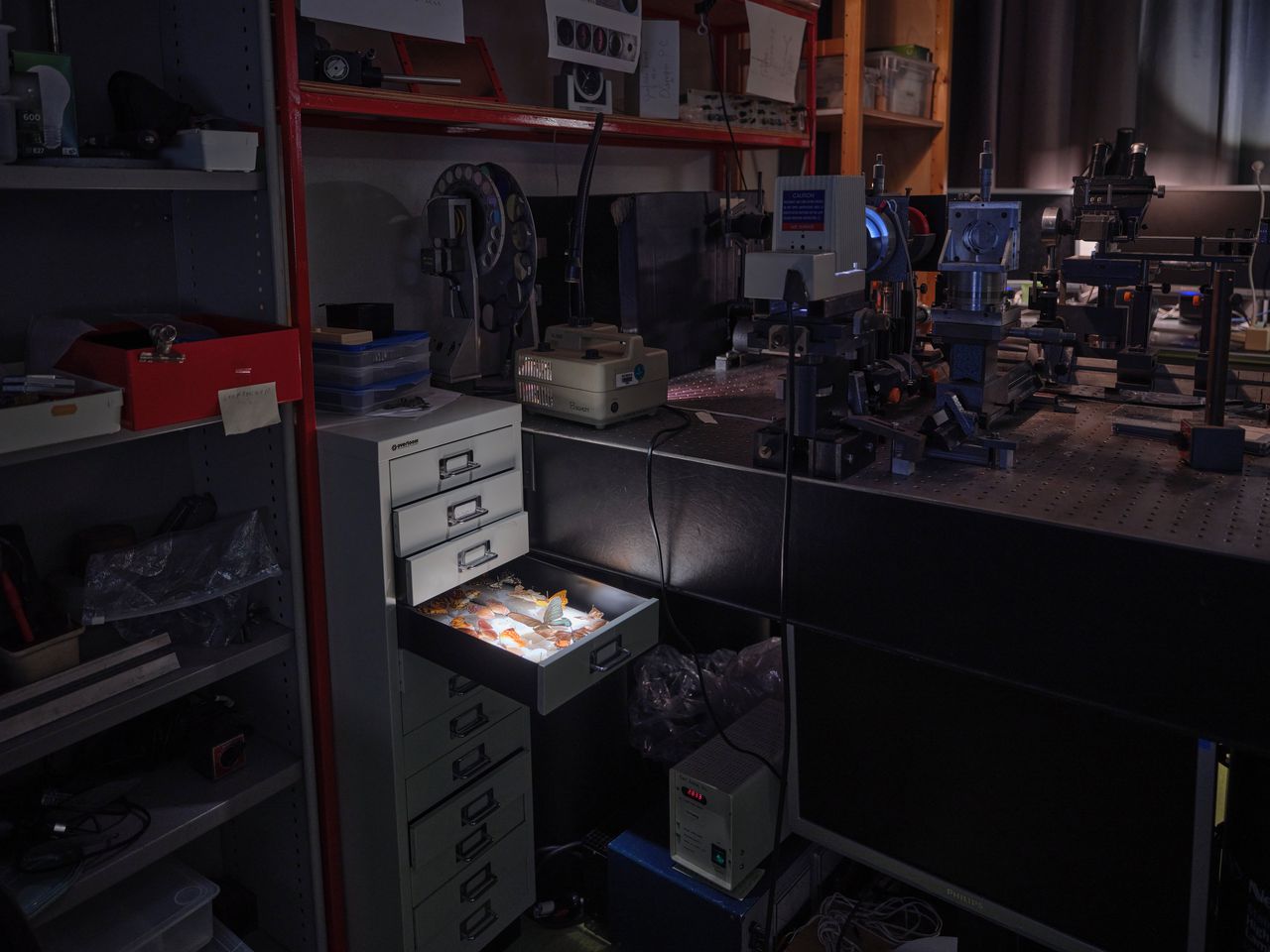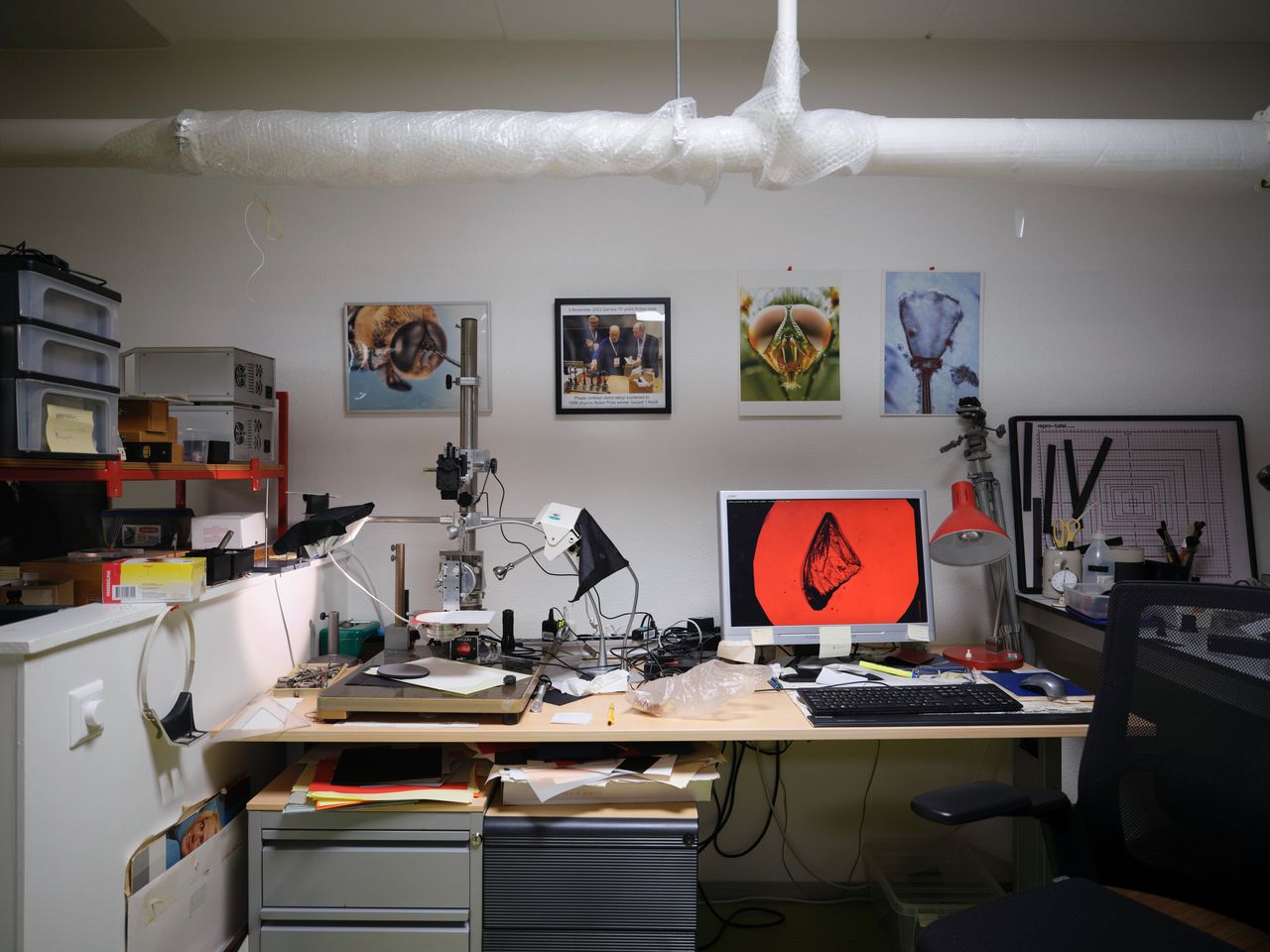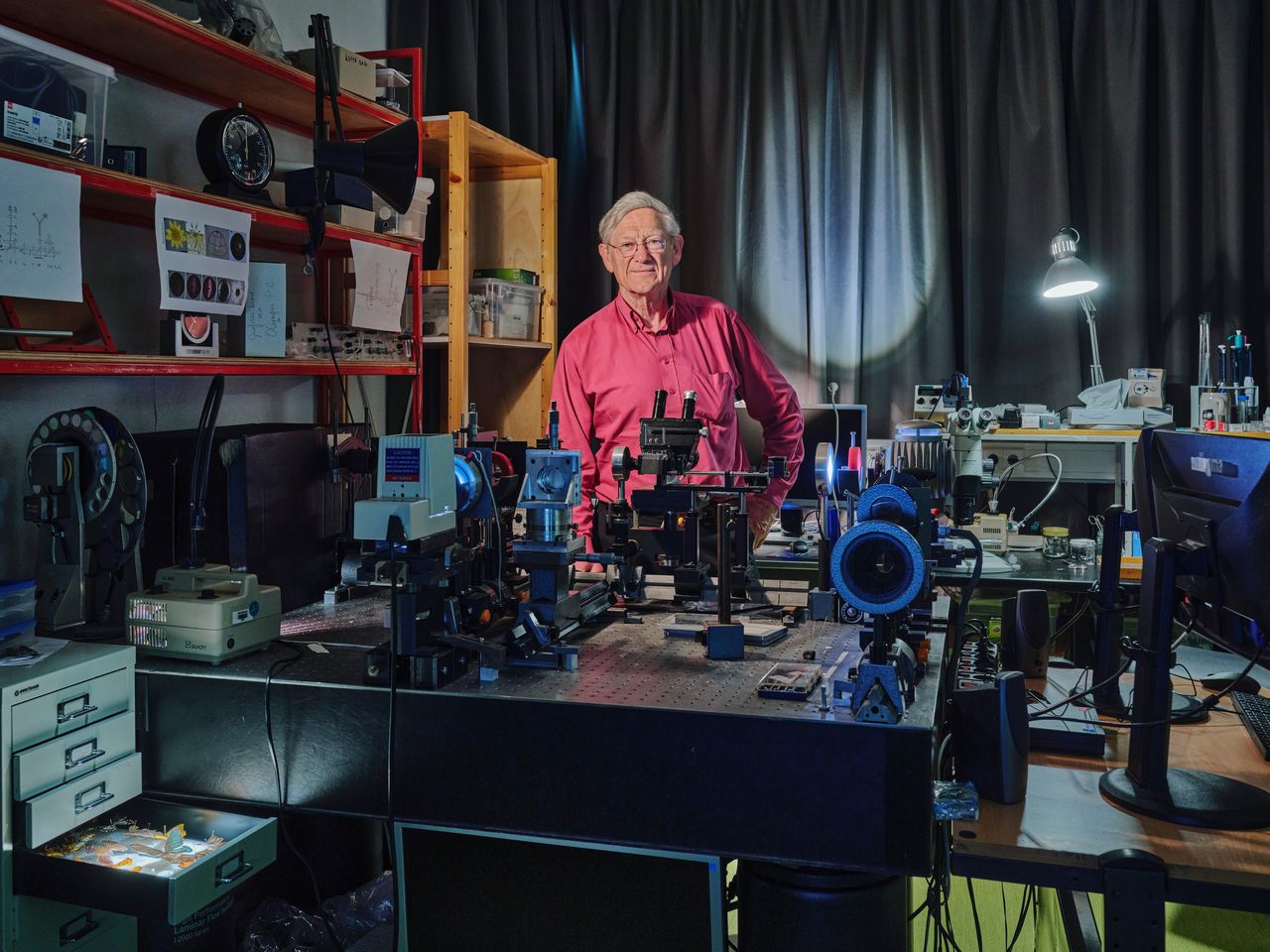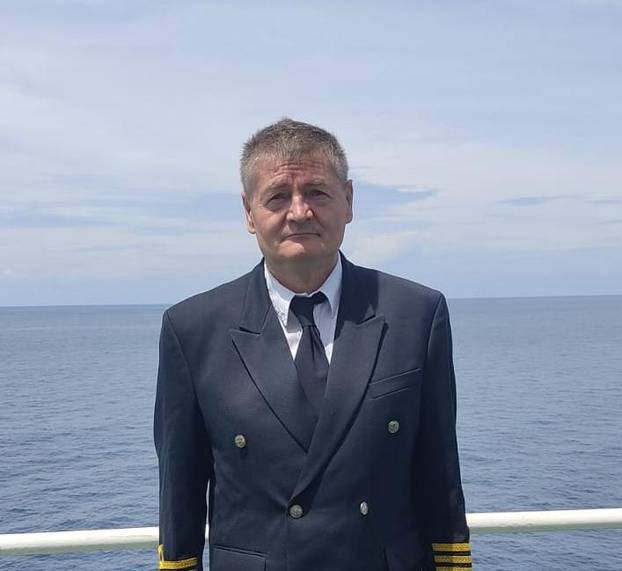In a lab full of self -built instruments, Doekele Stavenga (83) investigates the secret of iridescent animal colors

From the azure water lady to the Orange tip, from the lemon butterfly to the Golden Tor: in the Dutch spring nature it is bursting with the colorful insect species. But how is it possible that some beetles shine like that? Why does one butterfly have more intense colors than the other? And what do insects actually see?
Emeritus professor of Biophysics Dourkele Stavenga (83) has been researching physics behind animal colors for more than sixty years. In his lab on the campus of the University of Groningen, he has a large chest of drawers full of boxes. Beetings, butterfly wings, parrot feathers – all neatly arranged. « Take this ARA spring, » says Stavenga as he brings out a yellow with a blue spring. « The yellow color is formed exclusively by a pigment that absorbs the blue part of the light. It is very different with the blue color, where microscopically small structures ensure the reflection of the light. You also see such a structural color, for example, with soap bubbles. This creates thanks to the extremely thin bubble fleece. » Depending on the angle at which you look, you will see different colors, an effect that is also called ‘iridization’ or ‘irization’.
/s3/static.nrc.nl/wp-content/uploads/2025/06/30151900/GettyImages-178788985.jpg)
The fascination of Stavenga once started as a physicist from his education when he came into contact with beetles. “They can shine so great metalful. Look here, this box with Buprestidae – Beautiful beetles. Their secret lies in the order of melanin in their shield. Melanine is a very general pigment, we also have it in our skin, and if it is randomly ordered it looks brown or black. But in beetles are countless layers of melanine, with a high refractive index, which are interspersed with layers of chitine, where the refractive index is lower. The layers have a thickness less than a micrometer (that is a thousandth millimeter) and together form a so -called optical multi -layer, with an intense structural color. ”
They see each other and the world around them so very differently than we do
The metallic-colored feathers of, for example, paradise birds, ducks and magpies also have highly similar multi-layers, but then of melanin and keratin. « And with the structure colors of the feathers of Kolibris and Pauwen, air channels also play an important role. »
Stavenga’s Lab is full of ingenious research instruments, which he built in recent decades himself, together with technical assistant Hein Leertouwer (88). “They are now also used intensively by fellow researchers, for example by biologist Casper van der KooiThat research does to the colors of flowers and butterflies. A special instrument is the scatterometer, a device with many lenses and an ellipse -shaped mirror, which measures the light spread of, for example, butterfly scales. ”


Stavenga points to a tiny bright blue scal that is placed in the setup. “The intense blue of the Morpho butterfly, Morpho Didiusalso a structural color, is due to layers of chitin with air in between. ” Shams of butterfly wings look flat on small, flat bags of a few micrometer and at most 200 micrometer. Study, but the scatterometer offers a solution. «
Over the years, Stavenga has published hundreds of scientific articles, and he is still caught by science: « Thanks to the university I can still investigate what I find very interesting. » He not only delves into animal colors but also in how insects perceive the world around them (containing other insects and flowers). « Insects can see ultraviolet light, and sometimes also infrared. They see each other and the world around them very differently than we do. »
/s3/static.nrc.nl/wp-content/uploads/2025/06/30152831/web-0206WET_Stavenga5.jpg)
Together with biology students, he is currently investigating the spatial eyesight of a fruit fly, again with the help of an arrangement that he has developed himself. « Just like in humans, the view of flying is not homogeneous. Straight ahead, they see sharper than aside, there is a gradient in it. »
By photographing the composite fruit aircraft from all directions with a complicated microscopic arrangement, the variation in visual acuity can be calculated, and how it differs between male and female fruit flies. « Do you see that green spot in the composite eye? That is the pseudopupil, which is moving over the eye, depending on the direction of which you are looking at the insect. That way we can determine exactly the viewing field distribution. Ultimately, we want to find out how visual information processing goes from the photoreceptors to the brain. »
Do you also see how aesthetic, beautiful and diverse the eyes are?
On the wall of the lab there are also beautiful, enlarged photos of Dazenogen made by Leertouwer. With those stitching flies, the males have a completely different view than females, says Stavenga: they are very good at distinguishing ultraviolet-blue light, so that they can clearly see a potential partner standing against heaven. « You also see how aesthetic, beautiful and diverse the eyes themselves are, with all kinds of different colors and patterns? Numerous butterflies and flies and dragonflies have such beautifully colored eyes, in which different pigments also influence the sensitivity to certain light golf lengths. »

:format(jpeg):fill(f8f8f8,true)/s3/static.nrc.nl/taxonomy/bf9b707-commentaar-itemafbeelding-2024.png)
/s3/static.nrc.nl/images/gn4/stripped/data133150743-6481af.jpg|https://images.nrc.nl/wRRz0vyTmsakurOoM8-q-mSdd3Q=/1920x/filters:no_upscale()/s3/static.nrc.nl/images/gn4/stripped/data133150743-6481af.jpg|https://images.nrc.nl/P4WTMDSXwkcYiVdckp1Vb_ozE6M=/5760x/filters:no_upscale()/s3/static.nrc.nl/images/gn4/stripped/data133150743-6481af.jpg)
:format(jpeg):fill(f8f8f8,true)/s3/static.nrc.nl/bvhw/wp-content/blogs.dir/114/files/2019/01/vos-marjoleine-de-online-homepage.png)




